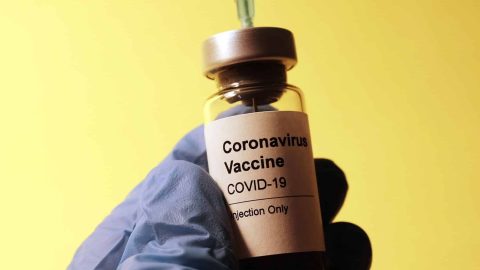Covid vaccine distribution has begun in much of the developed world. Politicians, commentators and citizens criticize the slow start to immunizations. But like the Tour de France: What counts is not who wears the yellow jersey during the first stage, but who crosses the finish line first at the end. Three factors are crucial to that: vaccine supply, vaccine distribution and, most importantly, vaccination acceptance.
Did the EU back the wrong horse with AstraZeneca?
The CEO of BioNTech has criticized the EU’s approach to focus on as many vaccines as possible rather than the most promising while ordering in summer 2020. Ex post, this statement may be correct, but in terms of Pfizer/BioNTech vaccines ordered per capita, the EU at 0.33 is actually just ahead of the U.S. and the U.K. at about 0.30. In any case, to achieve the herd immunity goal (about 0.75 vaccines per capita), other vaccine candidates are needed. Moderna’s vaccine has been licensed in the EU these days (per capita EU: 0.18 USA: 0.30). Approval is still pending for AstraZeneca’s vaccine, which has already been approved in India and the United Kingdom. The efficacy has been questioned due to inaccuracies in study design (per capita EU: 0.44 USA: 0.75). For the EU, however, the results of the phase 3 studies of the vaccines from Johnson&Johnson (per capita EU: 0.44 USA: 0.30) and CureVac (per capita EU: 0.25 USA: 0), which are expected for the end of January and the end of February, respectively, are likely to be decisive. Both vaccines have provided more robust results in Phase 1/2 trials than AstraZeneca and are storable in simple refrigerators.
The “Moderna Spritzer” – a questionable idea
In the U.S. the plan was to immunize up to 20% of the population each month from the time Pfizer’s and Moderna’s two mRNA vaccines were approved. This goal was ambitious from the outset, considering that during the 2009 swine flu pandemic, only about 10% of the population could be immunized each month. That with a single-dose vaccine that was much easier to store. Administering the two doses about a month apart turned out to be an administrative bottleneck. While initially the second shot of the vaccine was “reserved” when the first shot was administered to ensure that it would be available in a month’s time, the move is now to inject all available doses as soon as possible. More controversial is the idea of diluting Moderna’s vaccine to vaccinate even more people more quickly. Although the results of the Phase 2 trial of the vaccine suggest that it would be nearly as effective at a lower dose, at least in 18-55 year olds, there is disagreement in scientific circles about whether the measure makes sense. There are voices that would welcome this, while others speak of incalculable risks should SARS-CoV2 develop resistance to weak vaccines.
Vaccine fear and vaccine envy
Ultimately, any debate about availability and speed is futile if a recalcitrant minority of the population refuses vaccination. Since there will be no approved vaccines for children and adolescents under 16 years of age in the foreseeable future and this group represents about 15% of the population, 12% of strict vaccination opponents in the rest of the population are sufficient to make herd immunity impossible. Given this, the extent to which a vaccination campaign can succeed without some form of direct or indirect coercion is an open question. At the other end of the social spectrum envy debates are increasingly occurring when it comes to prioritization in access to vaccines. In all respects governments around the world will be challenged more than ever in the coming months to take the right actions to bring the pandemic to a swift end. While the logistical supply of vaccines may play a larger role in the beginning, it will take a whole-of-society effort to cross the finish line in the yellow jersey.
Legal note:
Prognoses are no reliable indicator for future performance.
Legal disclaimer
This document is an advertisement. Unless indicated otherwise, source: Erste Asset Management GmbH. The language of communication of the sales offices is German and the languages of communication of the Management Company also include English.
The prospectus for UCITS funds (including any amendments) is prepared and published in accordance with the provisions of the InvFG 2011 as amended. Information for Investors pursuant to § 21 AIFMG is prepared for the alternative investment funds (AIF) administered by Erste Asset Management GmbH pursuant to the provisions of the AIFMG in conjunction with the InvFG 2011.
The currently valid versions of the prospectus, the Information for Investors pursuant to § 21 AIFMG, and the key information document can be found on the website www.erste-am.com under “Mandatory publications” and can be obtained free of charge by interested investors at the offices of the Management Company and at the offices of the depositary bank. The exact date of the most recent publication of the prospectus, the languages in which the fund prospectus or the Information for Investors pursuant to Art 21 AIFMG and the key information document are available, and any other locations where the documents can be obtained are indicated on the website www.erste-am.com. A summary of the investor rights is available in German and English on the website www.erste-am.com/investor-rights and can also be obtained from the Management Company.
The Management Company can decide to suspend the provisions it has taken for the sale of unit certificates in other countries in accordance with the regulatory requirements.
Note: You are about to purchase a product that may be difficult to understand. We recommend that you read the indicated fund documents before making an investment decision. In addition to the locations listed above, you can obtain these documents free of charge at the offices of the referring Sparkassen bank and the offices of Erste Bank der oesterreichischen Sparkassen AG. You can also access these documents electronically at www.erste-am.com.
Our analyses and conclusions are general in nature and do not take into account the individual characteristics of our investors in terms of earnings, taxation, experience and knowledge, investment objective, financial position, capacity for loss, and risk tolerance. Past performance is not a reliable indicator of the future performance of a fund.
Please note: Investments in securities entail risks in addition to the opportunities presented here. The value of units and their earnings can rise and fall. Changes in exchange rates can also have a positive or negative effect on the value of an investment. For this reason, you may receive less than your originally invested amount when you redeem your units. Persons who are interested in purchasing units in investment funds are advised to read the current fund prospectus(es) and the Information for Investors pursuant to § 21 AIFMG, especially the risk notices they contain, before making an investment decision. If the fund currency is different than the investor’s home currency, changes in the relevant exchange rate can positively or negatively influence the value of the investment and the amount of the costs associated with the fund in the home currency.
We are not permitted to directly or indirectly offer, sell, transfer, or deliver this financial product to natural or legal persons whose place of residence or domicile is located in a country where this is legally prohibited. In this case, we may not provide any product information, either.
Please consult the corresponding information in the fund prospectus and the Information for Investors pursuant to § 21 AIFMG for restrictions on the sale of the fund to American or Russian citizens.
It is expressly noted that this communication does not provide any investment recommendations, but only expresses our current market assessment. Thus, this communication is not a substitute for investment advice.
This document does not represent a sales activity of the Management Company and therefore may not be construed as an offer for the purchase or sale of financial or investment instruments.
Erste Asset Management GmbH is affiliated with the Erste Bank and austrian Sparkassen banks.
Please also read the “Information about us and our securities services” published by your bank.

